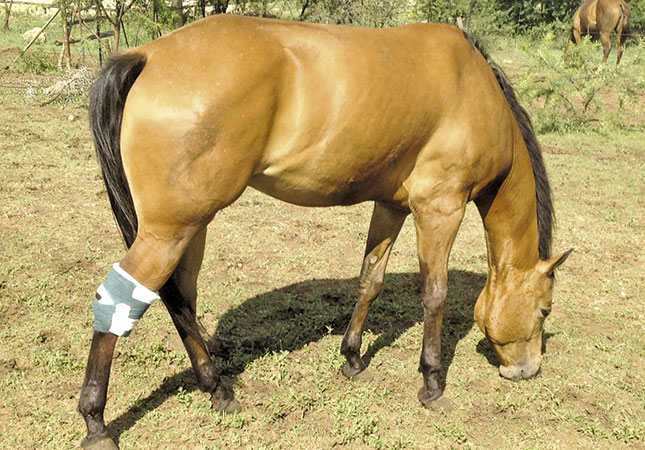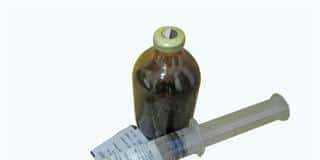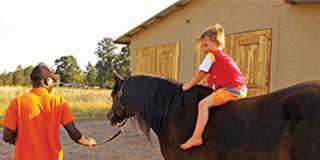
Hind leg lameness in riding horses is very often associated with the hock joint. This joint flexes and straightens to give the thrust that pushes a horse forwards. It also acts as an anchor when the horse turns, and carries the weight when it rears to go over a jump. The bones of the hock include those of the upper leg, the tibia and fibula, and shannon with its two splint bones (metatarsals).
These bones are held together by a complicated system of ligaments. The hind leg muscles run beside and connect to the hock bones via tendons, each in its own sheath. Any of these structures, if inflamed or injured, can cause painful hocks.
The most common and easily diagnosed hock pain is associated with swelling and heat over the joint. The horse will be inclined to rest its toe and you can feel the warmth by putting your hand over the hock joint and comparing it with the opposite joint.
In most cases, this is merely a mild strain, common in jumpers or polo horses, when the ground is uneven and the horses have to turn small circles at speed. It frequently occurs in unfit horses after they have rested for six weeks following horse sickness vaccines. Riders should remember that all horses need to be brought back into work slowly.
Reluctant to move
More serious hock conditions tend to be associated with chronic mild pain. Lameness may not be obvious. Instead, the horse is reluctant to move forward and bring its hocks under itself. You may notice the horse is ‘heavy on the forehand’ and reluctant to jump or go up hills. It sometimes shifts from one hind leg to another in the stable and puts its ears back, pulling its lips up in pain.
It may even seem as if the horse has a sore back or hip joints. If both hind legs are affected, lameness may not be obvious when the horse trots away, but it can be seen to be ‘going short’, if you watch it from the side. These signs are associated with chronic bursitis, joint pain, osteo-chondritis or arthritis of the hock. Diagnosis is difficult and your vet will probably use nerve blocks to pinpoint the problem, then follow up with sonars or X-rays.
Treatment
For acute pain, cold water and cool packs are the best treatment, along with rest and gentle exercise. Liniment can be rubbed into the hocks and a soft support bandage applied over thick cotton wool. Strained hocks should improve within two to three days. In a few cases, acute pain can be associated with severely torn ligaments, tendons or even fractures, which will not improve with conservative treatment. Chronic hock pain requires complex veterinary treatment, including long-term anti-inflammatory drugs and injection of cortisone or hyaluronic acid into the hock joint.













